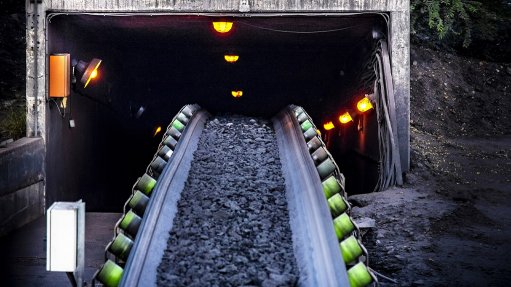
Weba Chute Systems address multiple bulk materials handling issues including correct delivery onto conveyor belts.
Often there is more than one challenge that faces a plant in moving materials, and this is one of the advantages of the Weba Chute System: it addresses multiple bulk materials handling issues at once.
Among the key challenges that plants face, for instance, are spillages and blockages at the transfer point. This creates risks to safety and the environment, leading to costly downtime. Dust is also a common problem, compromising workers’ health and even leading to regulatory non-compliance. Excessive wear of conveyor belts and transfer point components is another headache for plant operators, often requiring frequent maintenance and causing unscheduled downtime.
“The source of these issues is invariably the uncontrolled discharge of material,” says Alwin Nienaber, technical director at Weba Chute Systems. “To effectively control the direction, flow and velocity of material, each transfer point needs to be custom-designed using sound engineering principles.”
Weba Chute Systems develops its chute designs based on the ‘supertube’ effect, says Nienaber, using sophisticated 3D software as well as discrete element method (DEM) simulation for verification. The controlled transfer of material onto the conveyor belt reduces wear and tear on belts while also minimising the physical impact that creates dust. The cascade lining system can also be employed, allowing 95% of material to run on like material to reduce wear.
Nienaber highlights that transfer points contribute to some of the highest maintenance costs in a bulk materials handling plant, and should therefore be considered as critical elements of a minerals processing system. A chute’s performance is especially relevant to the wear-life of conveyor belts, which can account for a large percentage of running or maintenance costs.
“Conveyors are carefully selected to match the plant’s operational needs, as are the feeders, crushers, hoppers and screens,” he says. “Unfortunately, the chutes at the transfer points are often considered as simply fabricated platework, and not afforded the same detailed attention.”
Optimum chute design and customisation can solve a range of plant challenges while reducing maintenance requirements, improving transfer conditions, increasing throughput and rendering a longer life to conveyor belts. Nienaber notes that global best practice has in fact accepted the vital role that chutes play, recognising that they should be engineered to suit the specific application.
Weba Chute System’s design philosophy has found its way into over 5,000 transfer chute installations in mines and plants around Africa and abroad.
Weba Chute Systems address multiple bulk materials handling issues including correct delivery onto conveyor belts.